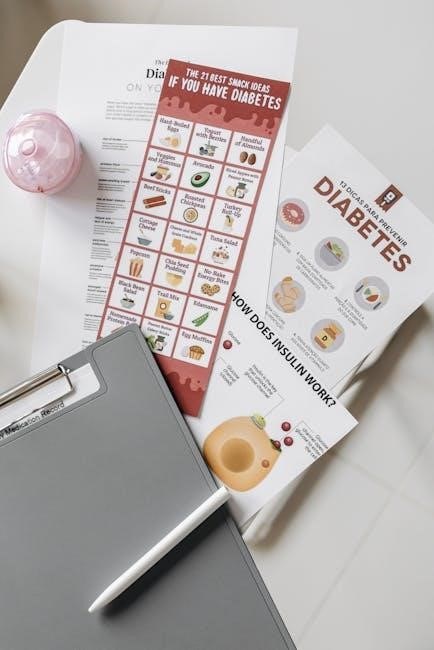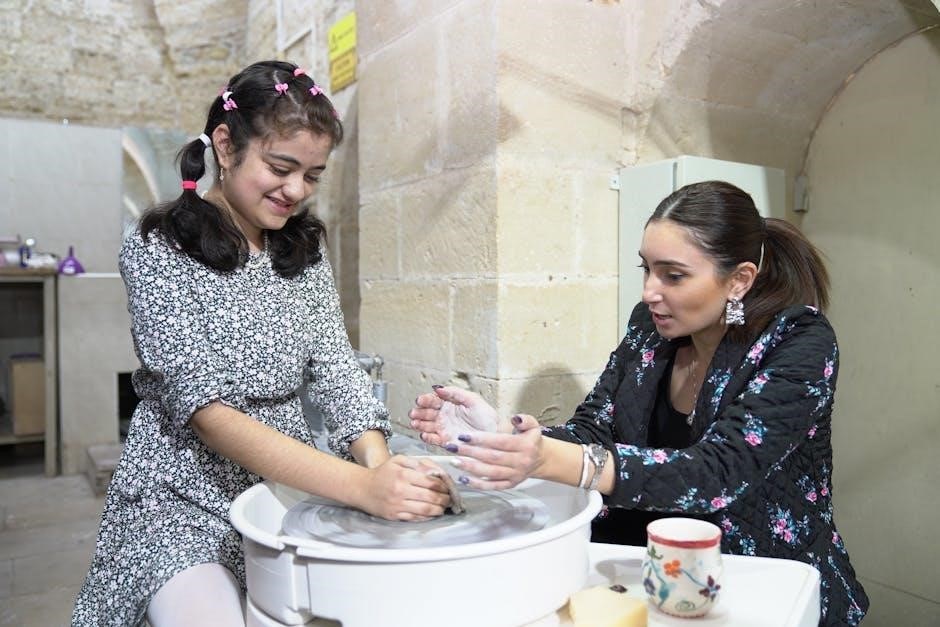The LPN Pocket Guide is an essential resource for licensed practical nurses, offering a portable and comprehensive reference for daily tasks and critical care situations.
Overview of the LPN Pocket Guide
The LPN Pocket Guide is a concise, portable resource designed to support Licensed Practical Nurses in their daily practice. It covers essential clinical skills, medications, legal considerations, and patient care tips. The guide is organized to provide quick access to critical information, ensuring efficiency and accuracy in patient care. It serves as a handy reference for both new and experienced LPNs, helping them stay updated on best practices and standards. This guide is a vital tool for delivering high-quality, safe care in various healthcare settings.
Importance of a Pocket Guide for LPNs
A pocket guide is an indispensable tool for LPNs, offering quick access to critical information during busy shifts. It ensures that nurses can make informed decisions confidently, reducing errors and improving patient outcomes. The guide’s portability allows it to be used in various settings, from clinics to hospitals. By providing up-to-date best practices, it helps LPNs stay current with industry standards. This resource is essential for both new graduates and experienced nurses, enhancing efficiency and professionalism in daily practice.

Clinical Skills and Procedures
Mastering clinical skills is vital for LPNs to deliver safe, effective care. Proper techniques ensure accuracy, patient safety, and adherence to healthcare protocols in diverse settings.
Vital Signs Measurement
Accurate vital signs measurement is essential for assessing patient health. LPNs should master techniques for measuring body temperature, pulse rate, respiratory rate, blood pressure, and oxygen saturation. Using appropriate devices, such as thermometers, stethoscopes, and pulse oximeters, ensures reliable results. Proper positioning and preparation of the patient are critical for accurate readings. Documenting these measurements provides a baseline for tracking changes and informing care decisions. Regular practice and adherence to infection control measures ensure patient safety and data integrity.
Medication Administration Techniques
Proper medication administration is critical for patient safety. LPNs should use barcode scanners to verify medications, ensuring the right drug, dose, and patient. Techniques include oral, intravenous, intramuscular, and subcutaneous routes. Always check expiration dates and drug appearance before administering. Provide clear instructions to patients and monitor for side effects. Documentation should be accurate and timely, noting any reactions or missed doses. Adhering to facility protocols and double-checking orders helps prevent errors and ensures safe care.
Wound Care and Dressing
Effective wound care involves assessing the wound’s size, depth, and drainage. Cleanse with saline solution and pat dry. Choose dressings like hydrocolloid or foam based on wound type. Secure dressings to promote healing and prevent infection. Monitor for signs of infection, such as redness or foul odor; Document changes and update care plans. Patient education on wound care and follow-up is essential. Always follow facility protocols for dressing changes and infection control to ensure optimal outcomes and patient safety.

Medications and Pharmacology
Understanding pharmacology is crucial for LPNs, covering drug classes, their uses, side effects, and interactions. Proper administration ensures patient safety and effectiveness, requiring attention to detail and adherence to protocols;
Common Medications for LPNs to Know
LPNs should familiarize themselves with frequently prescribed medications, such as antihypertensives (e.g., Lisinopril), antidiabetics (e.g., Metformin), analgesics (e.g., Acetaminophen), and antibiotics (e.g., Amoxicillin). Understanding their mechanisms, side effects, and interactions is essential for safe administration. Additionally, knowing medications for chronic conditions like heart disease, asthma, and dementia is critical. Recognizing high-alert medications, such as insulin and warfarin, ensures careful handling to prevent adverse events. Staying updated on drug classifications and patient-specific dosages enhances medication management skills.
Medication Administration Routes
LPNs must be proficient in various medication administration routes to ensure safe and effective treatment. Common routes include oral, intravenous (IV), intramuscular (IM), subcutaneous (SC), and topical. Oral administration is the most frequent, while IV and IM require precise technique to avoid complications. SC injections, like insulin, need appropriate site selection. Topical applications must be applied correctly to prevent irritation. Understanding each route’s specifics ensures accurate administration, minimizes side effects, and enhances patient safety.
Handling Medication Errors
Medication errors must be addressed promptly to ensure patient safety. LPNs should notify the healthcare team and pharmacist immediately upon discovering an error. Documentation of the error, including the medication involved and corrective actions, is essential. Patients and families should be informed transparently. Preventive measures include double-checking orders, using barcode scanning, and adhering to hospital protocols. Reporting incidents helps improve future outcomes and maintains trust in care delivery. Timely intervention minimizes harm and upholds professional standards.
Lab Tests and Diagnostic Procedures
Lab tests and diagnostic procedures are crucial for accurate patient diagnoses. LPNs are essential in specimen collection and ensuring timely, precise test results, supporting effective patient care.
Common Lab Tests for LPNs
LPNs often encounter common lab tests such as complete blood counts (CBC), basic metabolic panels (BMP), and lipid profiles. These tests help assess patient health and guide treatment plans. Blood glucose monitoring is also routine for diabetic patients. Urinalyses and stool tests are frequently used to detect infections or abnormalities. Understanding these tests allows LPNs to effectively communicate results and prepare patients for procedures, ensuring accurate specimen collection and timely reporting.
- CBC: Measures blood cell levels.
- BMP: Evaluates kidney and liver function.
- Glucose testing: Monitors diabetes management.
Understanding Lab Result Interpretations
Interpreting lab results is crucial for LPNs to identify normal and abnormal values. Normal ranges vary by lab, so LPNs must compare results to reference values. Abnormal findings may indicate conditions like anemia or electrolyte imbalances. LPNs should relate results to the patient’s symptoms and medical history. Clear communication of findings to patients and healthcare teams ensures appropriate care. Understanding lab interpretations enhances patient outcomes and supports informed decision-making in clinical settings.
- Compare results to lab-specific reference ranges.
- Relate findings to patient symptoms and history.
- Communicate results clearly to patients and teams.
Preparing Patients for Diagnostic Tests
LPNs play a key role in preparing patients for diagnostic tests. Clear instructions ensure patient compliance and accurate results. Explain the procedure, preparation steps, and any required fasting or medications to withhold. Address patient anxieties to promote cooperation. Verify patient identity and medical history to avoid complications. Ensure proper attire and remove jewelry if needed. Document all preparations and report any concerns to the healthcare team to ensure a smooth testing process;
- Provide clear, concise instructions to patients.
- Confirm fasting and medication requirements.
- Address patient concerns and anxieties.

Legal and Ethical Considerations
- Adhere to patient rights and confidentiality.
- Follow scope of practice and ethical guidelines.
- Document accurately to avoid legal issues.
- Respect patient autonomy in care decisions.
Scope of Practice for LPNs
LPNs must practice within their legal scope, providing direct patient care under the supervision of RNs or physicians. Responsibilities include administering medications, performing basic nursing procedures, and monitoring patient conditions. They must adhere to state-specific regulations and avoid tasks beyond their training, such as complex assessments or diagnoses. Understanding boundaries ensures safe, ethical care and avoids legal repercussions. Continuous education helps LPNs stay updated on their role and responsibilities.
Confidentiality and HIPAA Guidelines
LPNs must adhere to HIPAA guidelines to protect patient confidentiality. This includes safeguarding PHI (Protected Health Information) and ensuring it is only disclosed with proper authorization. Sharing patient information without consent is illegal and unethical. Breaches can result in legal consequences and damage to patient trust; LPNs should participate in regular training to stay updated on confidentiality practices and understand their role in maintaining patient privacy in all healthcare settings.
Documentation Best Practices
Accurate and timely documentation is essential for LPNs to ensure continuity of care. Always record observations, interventions, and patient responses promptly. Use clear, concise language, avoiding abbreviations unless approved. Include only factual, objective information, and maintain patient confidentiality. Adhere to facility-specific documentation policies and legal standards. Regularly review and update records to reflect current patient status. Proper documentation helps prevent errors, supports legal compliance, and enhances communication among healthcare team members. Consistency and thoroughness are key to effective documentation practices in nursing care.

Communication and Patient Interaction
Effective communication is vital for LPNs to build trust and understanding with patients. Use clear, simple language, active listening, and empathy to ensure patient needs are met. Be culturally sensitive and adapt communication styles to individual preferences, fostering a supportive environment for open dialogue and collaboration in care.
Effective Patient Communication
Effective patient communication involves tailoring interactions to individual needs, ensuring clarity and understanding. Use non-verbal cues like eye contact and open body language to build rapport. Employ a patient-centered approach, asking open-ended questions and validating their concerns. Avoid medical jargon and provide explanations in simple terms. Active listening is crucial—allow patients to express themselves fully before responding. This fosters trust and collaboration, improving health outcomes and patient satisfaction. Regularly assess communication effectiveness and adapt strategies as needed.
Cultural Competence in Nursing
Cultural competence in nursing involves understanding and respecting patients’ diverse backgrounds, beliefs, and practices. Recognize how cultural differences influence health behaviors and treatment preferences. Be aware of personal biases and adapt care to meet individual needs. Use interpreters when language barriers exist and incorporate cultural practices into care plans. Respect religious beliefs, dietary preferences, and end-of-life care traditions. Providing culturally sensitive care enhances patient trust, satisfaction, and outcomes. Stay informed about diverse cultures to deliver person-centered, inclusive care.
De-escalation Techniques for Challenging Patients
De-escalation techniques are essential for managing agitated or combative patients. Remain calm, maintain a non-threatening posture, and speak in a soft, even tone. Active listening and empathy can diffuse tension. Provide a safe space and avoid physical constraints when possible. Validate the patient’s feelings and offer clear, simple choices to restore control; Avoid power struggles and set firm yet respectful boundaries. Know when to seek assistance from the healthcare team. These strategies promote a calm environment and patient safety.

Emergency and Critical Care
LPNs must be prepared to handle emergencies, assess critical conditions, and prioritize care. Quick decision-making and collaboration with healthcare teams are vital for patient outcomes.
Basic Life Support (BLS) for LPNs
LPNs must master BLS skills, including CPR, airway management, and rescue breathing. Proficiency in using automated external defibrillators (AEDs) is essential. Following ACLS guidelines, LPNs should prioritize chest compressions and ventilation ratios. Certification in BLS is mandatory, ensuring competence in life-saving interventions. Regular training updates are crucial to maintain skills and adapt to new protocols. Timely intervention and teamwork are critical in emergency situations to improve patient outcomes and survival rates.
Recognizing Emergency Situations
LPNs must quickly identify emergency situations, such as cardiac arrest, respiratory distress, or severe injury. Key signs include chest pain, difficulty breathing, altered mental status, or loss of consciousness. Proficiency in assessing vital signs and patient history helps prioritize interventions. Understanding the chain of survival and activating emergency protocols promptly is vital. Early recognition ensures timely care, improving patient outcomes and preventing complications. Staying alert to subtle changes in condition is critical for effective emergency response.
Initial Response to Medical Emergencies
LPNs should remain calm and prioritize patient safety during emergencies. Assess airway, breathing, and circulation (ABCs) immediately. Activate emergency protocols and notify the healthcare team. Provide basic life support, such as CPR or bleeding control, as needed. Use available tools like oxygen tanks or automated external defibrillators. Clearly communicate patient status and interventions to ensure coordinated care. Document actions taken and outcomes promptly. Knowing when to escalate care is crucial for optimal patient outcomes. Early intervention can significantly impact recovery and patient safety.

Pediatric and Geriatric Care
Pediatric and geriatric care requires specialized attention to unique needs. LPNs play a crucial role in promoting healthy aging and supporting pediatric development through tailored interventions and compassionate care.
Pediatric Vital Signs and Assessments
Accurate assessment of pediatric vital signs is essential for identifying normal ranges and detecting abnormalities. LPNs should measure respiratory rate, heart rate, blood pressure, and oxygen saturation, considering age-related variations. Physical assessments include evaluating hydration status, developmental milestones, and overall behavior. Proper technique is crucial, such as using appropriately sized cuffs for blood pressure measurements. Understanding normal values for infants, children, and adolescents ensures timely interventions. Continuous monitoring and documentation are vital for providing optimal care in pediatric settings. This section guides LPNs in performing these assessments effectively.
Geriatric Care Tips for LPNs
Geriatric care requires a patient-centered approach, focusing on dignity, safety, and comfort. LPNs should assess mobility and fall risks, using assistive devices as needed. Address sensory impairments by speaking clearly and ensuring proper lighting. Simplify communication to accommodate cognitive or hearing challenges. Manage chronic conditions proactively, such as pain or incontinence. Encourage medication adherence while monitoring for polypharmacy. Foster independence by promoting self-care and providing adaptive tools. Respect patient preferences and involve caregivers in care decisions to enhance quality of life for elderly patients.
Age-Specific Medication Considerations
Medication regimens must be tailored to patients’ age-related needs. For pediatric patients, dosages are often weight-based, and liquid formulations are preferred. In geriatrics, consider polypharmacy risks and reduced metabolism; start with low doses and monitor for side effects. Always review drug interactions with other medications and supplements. Ensure medications are age-appropriate, avoiding those with contraindications in specific age groups. Educate patients and caregivers about proper administration and potential adverse effects to enhance safety and adherence.

Mental Health and Behavioral Disorders
LPNs must recognize common conditions like anxiety, depression, and dementia. Use assessment tools to identify symptoms and provide supportive care while respecting patient rights and confidentiality.
Common Mental Health Conditions
LPNs encounter various mental health conditions, including anxiety, depression, bipolar disorder, schizophrenia, and dementia. Understanding symptoms like mood changes, hallucinations, or memory loss is crucial. Recognizing signs of PTSD, substance abuse, and personality disorders also aids in providing appropriate care. Familiarity with these conditions helps LPNs offer empathetic support, administer medications effectively, and assist with therapeutic interventions. Staying alert to behavioral changes and collaborating with healthcare teams ensures comprehensive patient management and promotes positive mental health outcomes.
Assessment Tools for Mental Health
LPNs use standardized tools to assess mental health, such as the Patient Health Questionnaire-9 (PHQ-9) for depression and the Generalized Anxiety Disorder 7-item scale (GAD-7) for anxiety. Cognitive function is often evaluated with the Mini-Mental State Examination (MMSE). The Hamilton Depression Rating Scale (HAM-D) and Hamilton Anxiety Rating Scale (HAM-A) assess symptom severity. These tools help identify mental health conditions, monitor progress, and guide appropriate interventions, ensuring comprehensive patient care and accurate documentation of mental health status.
Supportive Care for Behavioral Disorders
LPNs provide supportive care for patients with behavioral disorders by creating a safe, non-judgmental environment. This includes using de-escalation techniques, active listening, and empathy to build trust. They encourage patients to express feelings and participate in care plans. Environmental modifications, such as reducing noise or providing calming activities, can help manage agitation. LPNs also educate patients and families about coping strategies, medication adherence, and community resources, promoting overall well-being and fostering a collaborative approach to mental health care.

Infection Control and Safety
Infection control involves standard precautions, proper sterilization, and safe handling of bodily fluids. LPNs must use appropriate PPE and adhere to protocols to prevent infection spread.
Proper Hand Hygiene Techniques
Hand hygiene is a critical component of infection control. LPNs should wash hands with soap and water for at least 20 seconds or use alcohol-based hand sanitizer. Scrub all surfaces, including palms, backs, fingers, and wrists. Perform hand hygiene before patient contact, after removing gloves, and when hands are visibly soiled. According to CDC guidelines, this practice reduces the spread of pathogens by 50%. Consistent adherence is essential to prevent healthcare-associated infections and ensure patient safety. Proper technique and timing are vital.
Use of PPE in Healthcare Settings
Proper use of Personal Protective Equipment (PPE) is essential for preventing infection transmission. LPNs should wear gloves for direct patient contact, masks during aerosol-generating procedures, and gowns when exposure to bodily fluids is expected. Eye protection, such as goggles or face shields, is necessary for splashing or spraying of fluids. PPE should be donned before patient interaction and removed carefully to avoid contamination. Always follow CDC guidelines for correct usage and disposal to ensure patient and staff safety, adhering to infection control protocols. Proper PPE use reduces transmission risks significantly.
Preventing Nosocomial Infections
Preventing nosocomial infections requires consistent adherence to infection control practices. Hand hygiene is the cornerstone, using alcohol-based hand rubs before patient contact. Ensure proper cleaning and disinfection of surfaces and equipment. Use sterile techniques for invasive procedures and minimize unnecessary device use to reduce risks. Regularly monitor for infection signs and report outbreaks promptly. Educate patients on infection prevention strategies and promote a culture of safety within healthcare teams to protect both patients and staff from hospital-acquired infections.

Documentation and Reporting
Accurate documentation ensures continuity of care, reflecting patient progress and treatments. Timely incident reporting maintains transparency and accountability. Utilize EHRs effectively for organized, confidential, and legally sound records.
Accurate Charting and Record-Keeping
Accurate charting ensures legal protection, continuity of care, and accountability. Use clear, concise language, avoiding abbreviations that may cause confusion. Document all observations, interventions, and patient responses promptly. Include date, time, and signature for every entry. Maintain objectivity by recording facts rather than assumptions. Regularly review and update records to reflect patient progress. Ensure compliance with facility policies and legal standards. Proper documentation also supports effective communication among healthcare team members and reduces risks of misunderstandings or errors in patient care.
Incident Reporting Guidelines
Incident reporting is a critical process for maintaining patient safety and accountability. LPNs must document all unexpected events, including errors, falls, or near-misses, promptly and accurately. Include factual details, actions taken, and outcomes. Avoid personal opinions or assumptions. Reports should be objective, concise, and submitted within the facility’s timeframe. Maintain confidentiality to protect patient privacy and adhere to legal standards. Incident reports help identify system improvements and ensure transparency in patient care. Timely reporting fosters a culture of safety and accountability.
Electronic Health Record (EHR) Tips
Mastering EHR systems is essential for efficient patient care. Always ensure accuracy and completeness when documenting. Use clear, concise language and avoid abbreviations that could cause confusion. Organize information logically to save time during patient interactions. Utilize templates for routine documentation, such as vital signs or medication administration. Protect patient privacy by using strong passwords and securing devices. Regularly review system updates to stay informed about new features. Leveraging EHR tools can enhance patient outcomes and streamline your workflow as an LPN.
The LPN Pocket Guide is an invaluable resource, providing essential insights and practical tips for daily practice. It helps LPNs deliver high-quality patient care, emphasizing continuous learning and adaptation to best practices. Mastery of this guide enhances professional skills, ensuring optimal patient outcomes and career success.
The LPN Pocket Guide encapsulates essential clinical skills, medications, patient care strategies, and professional best practices. It covers vital sign measurement, medication administration, wound care, and infection control. The guide emphasizes legal and ethical considerations, effective communication, and cultural competence. Additionally, it addresses emergency responses, pediatric and geriatric care, and mental health support. By focusing on practical, evidence-based information, the guide equips LPNs to deliver high-quality, patient-centered care while adhering to professional standards and fostering continuous learning.
Continuous Learning for LPNs
Continuous learning is vital for LPNs to stay updated on medical advancements and best practices. Engaging in workshops, online courses, and professional conferences helps expand skill sets and enhance patient care. Staying informed about new technologies and evidence-based practices ensures LPNs remain competent and effective. Proactive learning fosters adaptability in a rapidly evolving healthcare environment, enabling LPNs to deliver high-quality care and maintain professional growth throughout their careers.
Final Thoughts on the LPN Pocket Guide
The LPN Pocket Guide serves as an essential resource for licensed practical nurses, offering concise yet comprehensive guidance; It covers critical areas such as clinical skills, medications, and patient interactions, ensuring LPNs are well-equipped for daily challenges. By emphasizing continuous learning and adaptability, the guide supports professional growth and excellence in patient care. This tool is indispensable for both new and experienced LPNs, helping them navigate the complexities of healthcare with confidence and precision.
